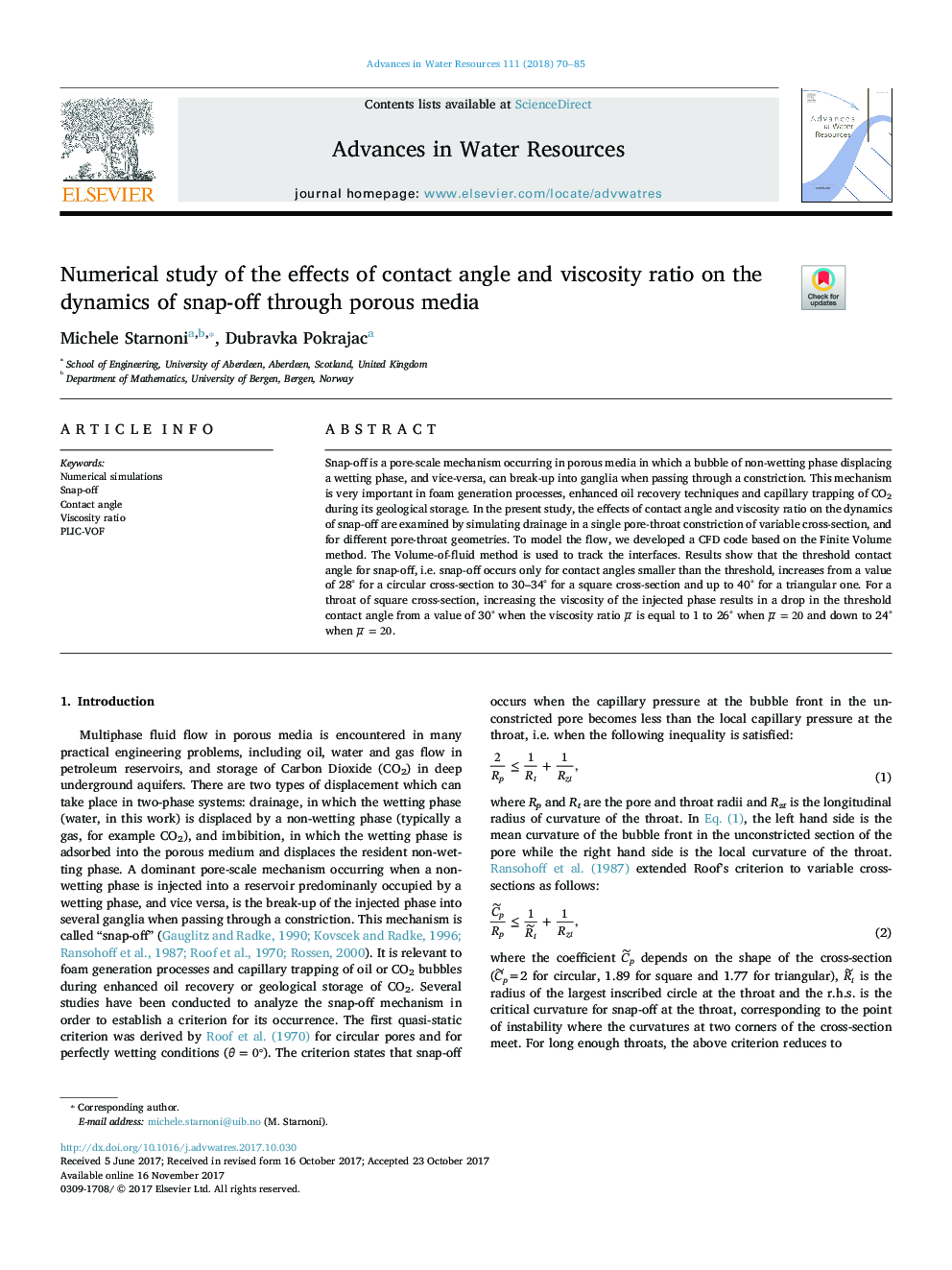| Article ID | Journal | Published Year | Pages | File Type |
|---|---|---|---|---|
| 8883399 | Advances in Water Resources | 2018 | 16 Pages |
Abstract
Snap-off is a pore-scale mechanism occurring in porous media in which a bubble of non-wetting phase displacing a wetting phase, and vice-versa, can break-up into ganglia when passing through a constriction. This mechanism is very important in foam generation processes, enhanced oil recovery techniques and capillary trapping of CO2 during its geological storage. In the present study, the effects of contact angle and viscosity ratio on the dynamics of snap-off are examined by simulating drainage in a single pore-throat constriction of variable cross-section, and for different pore-throat geometries. To model the flow, we developed a CFD code based on the Finite Volume method. The Volume-of-fluid method is used to track the interfaces. Results show that the threshold contact angle for snap-off, i.e. snap-off occurs only for contact angles smaller than the threshold, increases from a value of 28° for a circular cross-section to 30-34° for a square cross-section and up to 40° for a triangular one. For a throat of square cross-section, increasing the viscosity of the injected phase results in a drop in the threshold contact angle from a value of 30° when the viscosity ratio μ¯ is equal to 1 to 26° when μ¯=20 and down to 24° when μ¯=20.
Related Topics
Physical Sciences and Engineering
Earth and Planetary Sciences
Earth-Surface Processes
Authors
Michele Starnoni, Dubravka Pokrajac,
